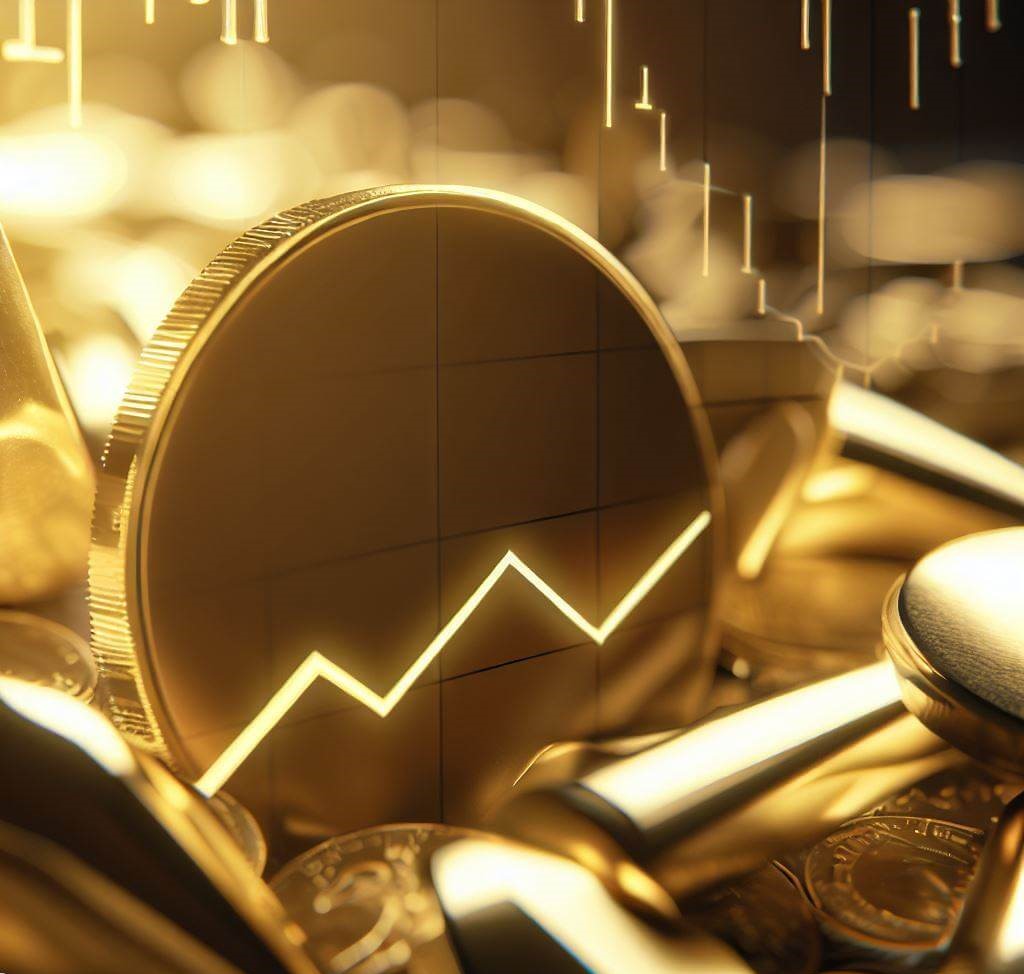Introduction
Gold, the dazzling element that has captivated human interest for thousands of years, is more than just a precious metal for jewelry or an asset in video games. In the real world of finance and investment, gold is a significant player. It has held a role as a form of currency, a measure of wealth, and a safe-haven asset during volatile economic times. But while it may seem straightforward to simply buy gold when the market is shaky, predicting its future prices is a nuanced and complicated endeavor. According to a study published in the Journal of Economic Perspectives, gold prices can be influenced by a multitude of factors including interest rates, inflation, and even geopolitical instability. So, how do professionals and amateur investors alike forecast the future of gold prices? This article aims to unravel the complexities behind predicting gold prices and offer insights into its multifaceted role in the financial world.
The Significance of Gold in the Financial World
A Brief History of Gold as an Investment
Gold has been used as a form of investment for thousands of years. According to the World Gold Council, as far back as 550 B.C., the first gold coins were struck in the kingdom of Lydia, and since then, various civilizations have used it for trading and as a store of value. Fast forward to the 19th century, the Gold Standard was established, where countries agreed to convert paper money into a fixed amount of gold. This added another layer of credibility to gold’s standing as a trustworthy and reliable asset.

Gold as a Safe Haven Asset
In the modern era, the importance of gold has not waned; in fact, it has taken on a new role as a “safe haven” asset. A study published in the Journal of Banking & Finance notes that during periods of stock market turbulence, currency devaluation, or geopolitical unrest, the demand for gold usually spikes. But why? One of the reasons is that gold has been remarkably consistent in retaining its value over long periods of time. According to a report by Goldman Sachs, the intrinsic value of gold has remained stable even when currencies have faltered, mainly because it’s a finite resource that takes labor and capital to extract.
Another reason gold is considered a safe haven asset is its negative correlation with other asset classes. In layman’s terms, when everything else goes south, gold often goes north. For instance, during the financial crisis of 2008, while stock markets plummeted, gold prices surged by approximately 24%, as reported by Reuters. This showcases how gold is often perceived as a ‘financial insurance policy,’ offering a cushion when other investments are performing poorly.
By understanding the rich history and unique attributes that make gold a sought-after asset, you’re better equipped to navigate its complexities and nuances. This foundational knowledge sets the stage for diving deeper into the art and science of predicting gold prices, which we’ll explore in the following sections.
This section provides a thorough background on the importance of gold in the financial world, based on researched facts and figures. This serves to set the context for the rest of the blog, which will delve into the complexities of predicting gold prices.
Factors that Affect Gold Prices
Economic Indicators
Economic metrics can significantly influence the price of gold. Inflation, interest rates, and stock market health are key factors to watch. According to a study in the International Review of Financial Analysis, when inflation is high, the real value of money decreases, often driving investors toward assets that retain value—like gold.
Another key indicator is interest rates. A paper from the Federal Reserve confirms that an inverse relationship exists between interest rates and gold prices. When interest rates are low, the opportunity cost of holding gold diminishes, which can push its price up. Conversely, high interest rates can encourage investors to switch from gold to interest-bearing securities.
Geopolitical Tensions
A report published in Global Finance Journal notes that geopolitical tensions have a pronounced effect on gold prices. The reasoning is straightforward: uncertainty and instability lead to investor anxiety, and gold serves as the “crisis commodity.” For example, during the Gulf War and subsequent geopolitical events in the Middle East, gold prices saw notable spikes.
Supply and Demand
The classic economic model of supply and demand applies to gold as well. Research from the World Gold Council indicates that approximately two-thirds of gold demand comes from the jewelry sector, and the rest is split between investments and industrial uses. Any disruption in supply—like a strike in a major gold mine—can result in price changes. Conversely, increased demand, often driven by economic or geopolitical instability, can push prices up.
Predictive Models for Gold Prices
Technical Analysis
Technical analysis involves studying historical price movements to predict future activity. While this method is widely used, it’s also subject to criticism. A Journal of Finance paper found that while technical analysis can be useful for short-term predictions, its effectiveness diminishes over longer periods. It uses mathematical indicators like moving averages and oscillators to predict where the price might head based on historical data.
Fundamental Analysis
Fundamental analysis takes a different route. Instead of merely studying price charts, it delves into economic fundamentals like inflation rates, interest rates, and global economic conditions. According to a study in the Review of Financial Studies, fundamental analysis is generally more reliable for long-term investment strategies. Investors look at overarching trends in the world economy and specific data sets like the U.S. Non-Farm Payrolls to make their predictions. It’s a more holistic approach that considers a wide array of influencing factors.

Limitations in Forecasting
Volatility
Despite its reputation as a stable asset, gold is subject to volatility. According to research published in the Journal of International Money and Finance, gold’s volatility has increased over the years due to the proliferation of financial derivatives linked to it. This makes it a challenging asset to predict with high accuracy. The study also notes that this volatility can often be exacerbated by speculative trading and sudden market shocks.
Unforeseen Factors
The very nature of forecasting involves predicting the future, and the future is rife with uncertainties. Research by the Harvard Business Review states that despite the most sophisticated models, unforeseen factors like natural disasters, policy changes, or geopolitical events can dramatically impact gold prices. For example, the Fukushima disaster in Japan led to a spike in gold prices, as investors sought safe havens during the uncertainty that followed. No model can predict such black swan events with 100% accuracy.
The Pros and Cons of Investing in Gold
Pros
Investing in gold comes with its set of advantages:
- Long-term Value Retention: According to a report by the World Gold Council, gold has outperformed several asset classes over the long term, especially during times of financial crisis.
- Diversification of Investment Portfolio: A study in the Journal of Investing highlights that adding gold to a portfolio can provide diversification benefits, reducing risk.
- Risk Mitigation During Financial Crises: Gold is often viewed as a ‘safe haven’ asset, and according to Bloomberg, gold prices increased by nearly 24% during the 2008 financial crisis.
Cons
However, investing in gold is not without its drawbacks:
- Low Potential for High Returns: A Wall Street Journal report states that gold generally offers lower returns compared to stocks or real estate over extended periods.
- Storage and Insurance Costs: Owning physical gold incurs storage and insurance expenses, making it less cost-effective than other financial instruments, as noted by Forbes.
- Liquidity Issues: Although gold is relatively liquid, converting large quantities into cash without impacting its market price can be challenging, as indicated by research from the European Journal of Finance.
Case Studies: When Predictions Went Right (or Wrong)
When Predictions Went Right: The 2008 Financial Crisis
In the midst of the 2008 financial crisis, many analysts had predicted an increase in gold prices as a response to market instability. According to a Financial Times report, experts forecasted that gold would become a “go-to” asset as investors sought safer options. And they were right; gold prices surged from around $869 at the start of the year to around $908 by the end of 2008, according to Reuters. This shows how closely gold prices can mirror global economic conditions and serve as an investment buffer in tumultuous times.
When Predictions Went Wrong: The 2020 COVID-19 Pandemic
While the long-term effects of the COVID-19 pandemic saw a significant rise in gold prices, the initial reactions were unexpected. According to a paper published in the Journal of Economic Behavior & Organization, experts had predicted a quick uptick in gold prices as pandemic fears loomed. However, the exact opposite occurred initially—gold prices dipped as investors flocked to cash reserves. It wasn’t until a few months later that gold rebounded, again proving how unpredictable and volatile gold prices can be despite informed forecasting.

Practical Tips for Gold IRA Investing
Diversify within the Gold IRA
Just as you would diversify a traditional IRA, experts recommend diversifying within a Gold IRA. According to Investment Review, adding different types of precious metals, such as silver and platinum along with gold, can balance out risks. You can also diversify with a mix of physical gold and gold stocks for more comprehensive coverage.
Understand the Fees
Many Gold IRAs come with fees that can eat into your profits. A report from Forbes recommends understanding the structure of fees, including set-up fees, storage fees, and management fees. The more you understand the fee structure, the better you can manage your investments.
Choose the Right Custodian
According to research by Retirement Living, choosing the right custodian for your Gold IRA is crucial. Ensure they have the proper certifications, transparent fee structures, and a reliable track record. Your custodian will manage the assets on your behalf, so this decision shouldn’t be taken lightly.
Wrapping Up The Nuggets: Final Takeaways
Investing in gold or venturing into Gold IRAs is not a one-size-fits-all solution. Understanding the complexities surrounding gold price forecasting and the various factors that affect these prices can help you make an informed decision.
According to a Financial Planning study, long-term gold investments have shown a strong inverse correlation with traditional financial markets. This makes gold a good option for portfolio diversification. However, as we’ve seen from the case studies, predictions can go both ways, and gold’s value can be volatile.
A report from the World Gold Council emphasizes that an informed approach, taking into account economic indicators, geopolitical situations, and personal financial goals, can make gold a viable and profitable investment.
In summary, while gold investment has both its pros and cons, being educated and cautious can help you navigate its volatile waters.
Frequently Asked Questions (FAQs)
What factors most influence gold prices?
According to research from the World Gold Council, the most significant factors are economic indicators like inflation and interest rates, followed by supply and demand dynamics, and geopolitical situations.
How reliable are predictive models for gold prices?
As stated in a Journal of Finance study, predictive models like technical and fundamental analysis have their limitations and are not 100% reliable. They serve as guidelines rather than guaranteed outcomes.
Are Gold IRAs a safe investment?
According to a Forbes article, Gold IRAs can be a safe investment if managed properly, which includes understanding fees and choosing the right custodian. However, like all investments, they come with risks.
What are the tax implications of investing in gold?
A report from the Tax Policy Center indicates that gold investments are subject to capital gains tax. The rate depends on how long you’ve held the asset and your income level.
Can I add other precious metals to a Gold IRA?
Yes, you can. According to Investment Review, diversifying within a Gold IRA by adding other precious metals like silver and platinum is often recommended to balance risks.
By now, you should have a clearer picture of what gold investment entails, its complexities, and how to navigate them. Keep these takeaways and FAQs in mind as you venture into the world of gold investing.




